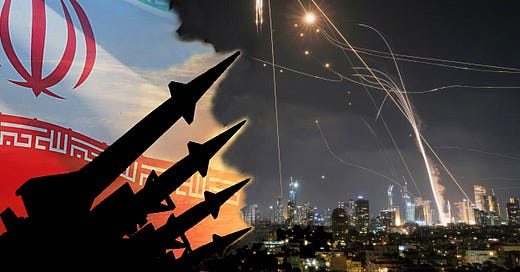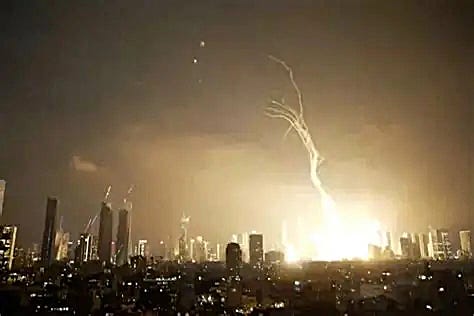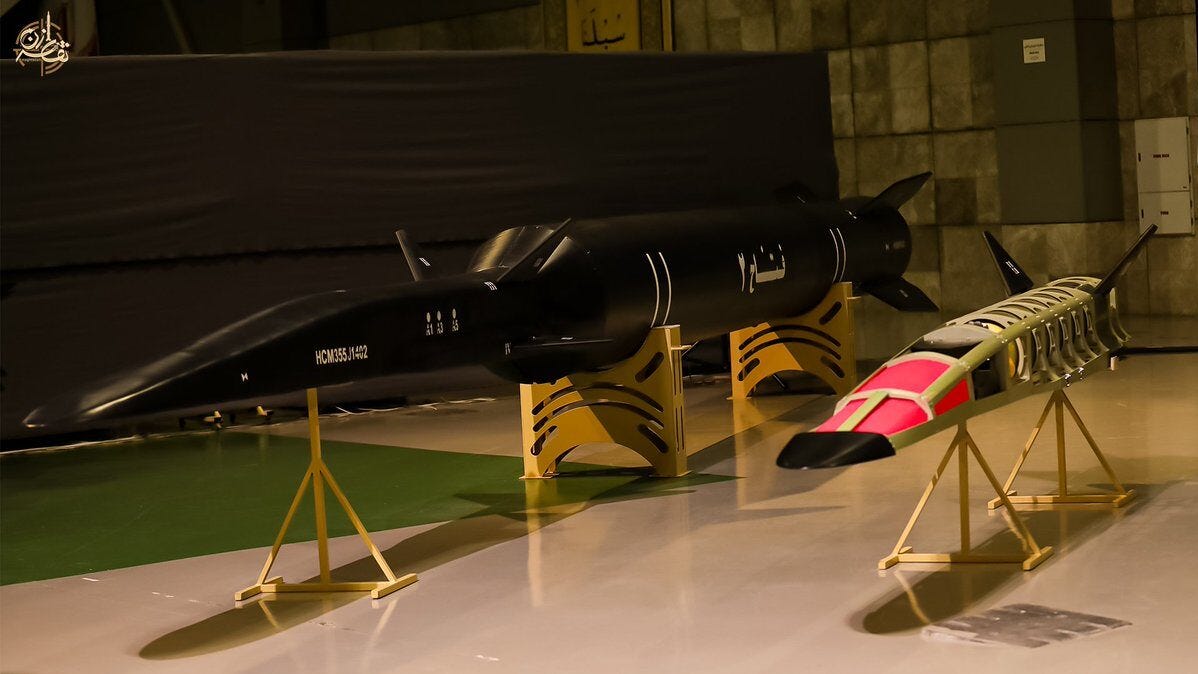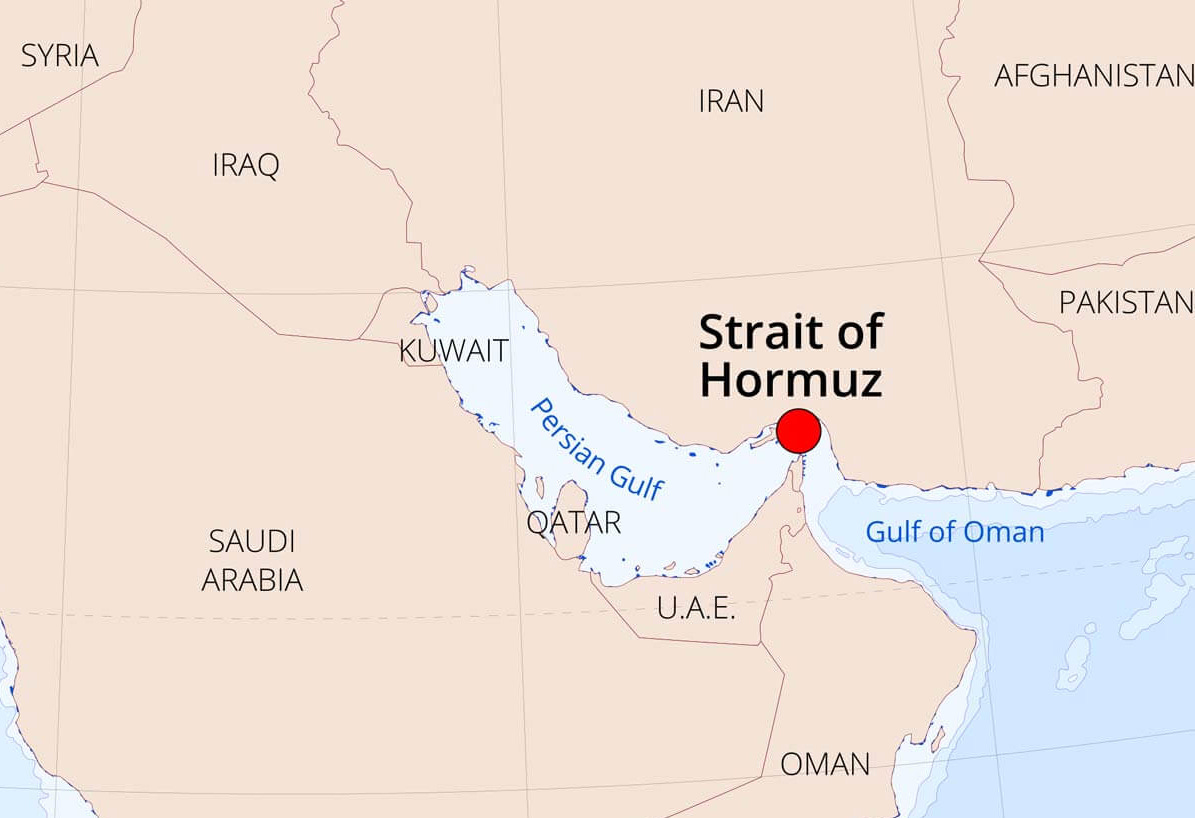How to Win a Nuclear War Without Nukes
Iran’s missile deterrence central to its battle with Israel and the US
As the war between Iran and Israel ramps up, questions will inevitably be raised over the two sides’ military capabilities. How exactly is Iran going to win against nuclear-armed powers?
With a US-led ground invasion of Iran unlikely, the key to Iranian victory over Israel will be its missile program, which is one of the most advanced in the world. It is not only the physical damage that Iran’s missiles can inflict but also the psychological effect they leverage in deterring Israel and the US from escalating the conflict. Deterrence will be the ultimate factor in determining who blinks first, with the question over Israeli and US willingness to use nuclear weapons hanging ominously in the air.
Deterrence refers to “attempts to dissuade an enemy from taking an offensive action by posing a threat of military retaliation” (Baizidi [1], p. 2). Deterrence is essentially the psychological effect that physical military hardware has on one’s enemies, sending a signal that the costs of using military force outweigh the benefits [2]. Deterrence is both a means of conflict and a mechanism for peace [1].
Central here is the willingness of actors to retaliate to aggression, and the perception of that willingness on behalf of the aggressing party [3].
Three criteria need to be satisfied for deterrence to be effective [4]. These are:
A portion of a state’s arsenal ought to appear as if it can withstand an enemy attack and be utilised in a response.
The state cannot react to false claims of a hostile assault.
The state is able to maintain authority and control.
Additionally, there are four key tenets of deterrence: capability, credibility, communication and stability [1].
Capability describes an actor’s ability to respond militarily to a threat. Military forces must be capable of successfully following through on threats in a way that is undesirable for the enemy [5].
Credibility is how others perceive the willingness of an actor to defend a certain interest [5]. The majority of deterrence failures stem from an actor being perceived as not credible in that others do not believe that they have the will to follow through on threats [5]. It is argued that the preservation of credibility was the motivating factor behind the US’s military interventions in Iraq, Somalia and the former Yugoslavia [6].
Communication refers to an actor clearly establishing a defence strategy aimed at peaceful resolution in which the consequences for the aggressor are made explicit [1]. However, even if a state clearly explains its true intentions, other actors may suspect deception [1].
Stability refers to deterrence losing its effect qua deterrence when it is deployed frequently [1]. That is, the psychological impact of deterrence for the actor against whom it is used may diminish with frequent use [1].
Since the Iranian Revolution of 1979, Iran has pursued a policy of biaxial deterrence both in the Middle East and internationally [1]. The two axes are: 1) aligned proxy groups, and 2) its missile program.
Iran’s core allied groups are Hezbollah in Lebanon, Hamas in Palestine and the Houthis (Ansar Allah) in Yemen. Support for these Shiite groups is inspired in part by Iran’s revolutionary national spirit. Itself born out of revolution against Western colonialism, the Islamic Republic of Iran has sought to export its revolutionary ideals around the region.
The notion of “exporting the Iranian revolution” is clearly established in the country’s constitution. Article 154 states:
154. The Islamic Republic of Iran considers human happiness in the entirety of human society as its ideal and recognises independence, freedom and the rule of truth and justice as the right of all people of the world. Therefore, while completely refraining from all forms of interference in the internal affairs of other nations, it supports the struggles of the oppressed against the oppressors all over the world in pursuit of their rights.
In 2006, then President Mahmoud Ahmadinejad hosted a ‘Holocaust’ conference in Iran at which a number of revisionist scholars and political figures gave speeches, many of which would have been illegal in their own countries.
Articles 15 and 16 of the Iranian constitution state that it is the intention of Iran to:
15. Expand and fortify Islamic fraternity and collective ta’avon among all people.
16. Organise the country’s foreign policy on the basis of Islamic criteria, brotherly commitment to all Muslims and unfaltering support for the Mustadha’fīn of the world.
Mustadha’fīn (مستضعفین) means “the oppressed” or “the downtrodden”. In Islamic political and social discourse, it refers to marginalised, exploited or vulnerable people who suffer under unjust political, economic or social systems. This aligns with the revolutionary stance of Iran’s leader Ayatollah Khomeini, who framed Iran’s struggle as part of a global movement against imperialism and oppression.
Ta’avon (تعاون) means “cooperation” or “mutual assistance”. It comes from the Koranic concept of believers working together for righteousness and piety. This policy inspires Iran’s support for those resisting US/Israeli oppression (i.e. Hezbollah and Hamas).
The second axis — and arguably more important — is Iran’s missile program. This program grew largely from Iran’s war with Iraq (1980-1988) in which the country was forced to fight one of the region’s largest militaries while under an arms embargo.
While Iraq boasted many conventional and unconventional weapons from 80 countries, Iran was forced to develop its own systems while relying on missile transfers from a handful of countries including North Korea and China [1].
In the first years of the conflict, Iraq launched more than 1,700 missiles at Iran, including the Frog-7, one of which killed 70 Iranians in the southwestern city of Dezful [1].
Scud missile technology was transferred to Iran by Libya for the purposes of both direct military use and reverse engineering [1]. Following Iraqi missile strikes on Iranian cities in 1985, Iran fired a number of these Scud missiles at key Iraqi infrastructure including the Kirkuk refinery, resulting in Saddam Hussein backing down from missile attacks in fear of similar reprisals [1].
Following Libya’s growing support for Iraq as the war progressed, Iran was forced to turn to North Korea from which it received both missiles and key technology, including 90 Hwasong-5 missiles as part of a $500 million deal [7].
The conflict with Iraq inspired the Iranian regime to prioritise their own missile development program. Other than missiles’ significant deterrence capabilities, the financial cost of a missile program is lower than that required for the modernisation of an air force, navy and army [1].
Since their successful development of the Shahab-1 missile (range 300 km), Iran has brought into service more than 60 models of rockets and missiles — including the hypersonic Fattah-2 missile [1]. It now has the largest missile arsenal of any Middle Eastern country, with a focus on ballistics. Ballistic missiles follow a curved path under the force of gravity and consist of a propulsion system, guidance system and warhead.
The official range of Iran’s missile capabilities is thought to be 2,000 km, however reports suggest that its Shahab-6 missiles have a range of between 8,500 km and 14,000 km which would allow them to reach the eastern coast of the US [7].
The international character of Iran’s missile program means the country both develops and transfers the technology to friendly nations such as Russia. In turn, Russia, China and North Korea are Iran’s main suppliers of the key technology used in missile manufacture [1]. Iran also provides technology to its aligned groups such as Hezbollah, Hamas and the Houthis who utilise it in their own missile programs [1]. Iran also has close relationships with Iraqi groups who it also supports with technology transfers [8].
It is this cluster of aligned groups (or proxies) which form the backbone of Iran’s internationalised deterrence strategy. Both US/NATO and Israeli military operations against these groups in Yemen, Lebanon, Syria and Palestine are essentially operations against Iran itself. These operations have had mixed results, with Hezbollah being weakened by the loss of supply lines through Syria. The Houthis in Yemen remain seemingly unaffected. It appears that Hamas still has the capability to cause Israeli military casualties despite Israel’s genocidal bombing campaign in Gaza.
Iran is also the inspiration for a number of other more distal groups in Saudi Arabia, Turkey, Azerbaijan, Nigeria, Somalia, Sudan and Kenya [1].
From a standing start, the success of Iran’s missile program is highly impressive, with its capability now superior to Israel’s in many respects. Iran reportedly has more than 2,000 ballistic missiles which are extremely difficult to intercept. Israel’s ballistic missile arsenal is supposedly numbered in the hundreds.
Another critical technological battleground is hypersonic missile technology. Iran claims that its Fattah-2 missile is hypersonic with its warhead reaching Mach 15 in the final stages of its trajectory. It is also claims that the Fattah-2 can alter its trajectory to avoid missile defence, with a range of 1,500 km. It has been reported that Iran has deployed its Fattah-2 hypersonic missile against targets in Israel during the latest round of strikes.
Israel has the upper hand with respect to air power with a significant number of its strikes on Iran being launched from F-35s using Iraqi airspace. However, there are reports that the Iranians have shot down at least three of these stealth aircraft.
Iran has another important card to play in the Strait of Hormuz. The strait is of huge economic significance with oil tankers passing through from various ports on the Persian Gulf carrying roughly one-fifth of the world’s oil supply and one-third of the world’s liquified natural gas (LNG). Iran occupies almost the entire northern coast of the strait and shutting it to tanker traffic could potentially collapse the economies of the US and Europe.
Iran and Israel are in a nuclear war, whether nuclear weapons are deployed or not. This war is as much about deterrence as it is about kinetic offence — it will be a war of the psychological and the physical.
A key question for Iran centres on how far the US is willing to go to defend Israel. Is Trump willing to become the second American President in history to order the use of nuclear bombs? Or does his seemingly unwavering support for Jews and Zionism have a hard limit? And, if Israel does possess nuclear weapons, will it be prepared to use them if it feels an existential threat to its existence?
Iran has so far demonstrated that it has the capability of hurting Israel with its ballistic missiles. How long it can sustain this level of aggression will be crucial — in reality and perception. Iran has also boosted its credibility by responding quickly and decisively against fresh Israeli aggression. The stability of its deterrence depends on whether the psychological impact of its strikes on Jews in Israel maintain their negative psychological impacts over time.
This war is one of missiles and minds, of who has the greater weapons and the strongest will. Although it lacks a nuclear weapon, Iran has proven it has the missile technology to deal a devastating blow to Israel. Iranian culture is an Aryan one, its people willing to face martyrdom. It is this will to victory and sacrifice that may ultimately prove decisive.
[1] Baizidi, R. (2024). The internationalization of deterrence: the case study of Iran's biaxial deterrence in the Middle East. Digest of Middle East Studies, 34(1), 34:e12350.
[2] Huth, P.K. (1988). Extended deterrence and the outbreak of war. American Political Science Review, 82(2), 423–443.
[3] Brodie, B. (1959). The anatomy of deterrence. World Politics, 11(2), 173–191.
[4] Sagan, S. & Waltz, K. (1995). The spread of nuclear weapons: a debate. New York: W.W. Norton.
[5] Haffa, R.P. (2018). The future of conventional deterrence: strategies for great power competition. Strategic Studies Quarterly, 12(4), 94–115.
[6] Danilovic, V. (2001). The sources of threat credibility in extended deterrence. Journal of Conflict Resolution, 45(3), 341–369.
[7] Cordesman, A.H., & Kleiber, M. (2007). Iran’s military forces and warfighting capabilities: the threat in the northern Gulf. Washington, DC: Greenwood.
[8] Hinz, F (2021). Missile multinational: Iran’s new approach to missile proliferation. London: International Institute for Strategic Studies (IISS).







